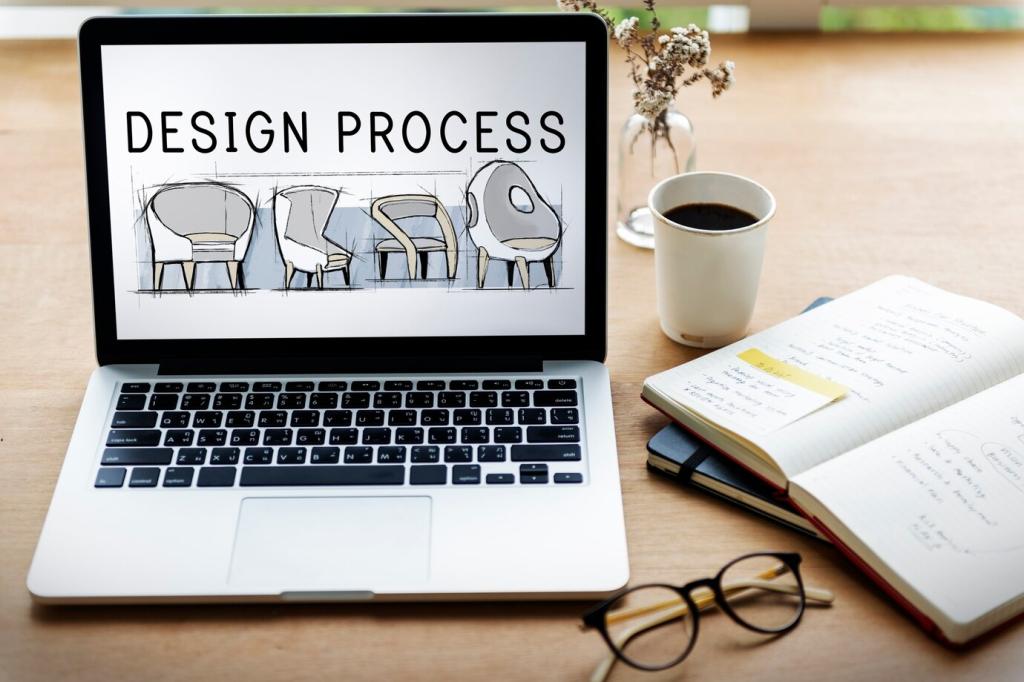Stand Out in the Design Industry: Make Your Mark
Theme: Standing Out in the Design Industry. Step into a practical, story-rich guide for designers who want to be remembered, hired, and recommended. Read on, join the conversation, and subscribe for fresh, actionable insights.

Discover Your Unfair Advantage
List three projects where clients praised you most, then extract repeating strengths—speed, clarity, storytelling, or systems thinking. Package those strengths into a simple promise that separates you from equally talented designers.
Craft a Positioning Statement That Lands
Write one sentence that states who you serve, the problems you solve, and what makes your approach distinctive. If a non-designer understands it instantly, you are on the right track.
Ditch Generic Claims, Embrace Proof
Replace clichés like “pixel-perfect” with evidence: outcomes, testimonials, and measurable improvements. Clients remember results and clear stories much more than polished adjectives or abstract capability lists.
Build a Portfolio That Pops and Persuades
Select projects that showcase breadth and depth—one complex system, one bold visual identity, one research-driven product. The variation spotlights your range while each case still demonstrates a consistent design signature.
Build a Portfolio That Pops and Persuades
Open with stakes, outline constraints, summarize research, explain decisions, and close with measurable impact. Embed artifacts—sketches, iterations, and tests—so readers feel the momentum behind your thinking and craft.


Build Presence: Personal Brand, Platforms, and Community
Use warm, specific language about your focus and values. Mention a quirky ritual—sketching at sunrise, library research Sundays—to humanize your profile and spark genuinely curious messages from potential collaborators.
Pick two platforms where your audience actually hangs out. Post consistently, repurpose thoughtfully, and maintain narrative continuity so followers connect dots between your projects, principles, and evolving expertise.
Publish actionable threads, brief tutorials, and postmortems. Invite questions at the end, and ask readers to share their experiments. Engagement compounds visibility, and visibility creates opportunities you cannot predict.
Turn Process into a Differentiator
01
Design Discovery That Feels Like Strategy
Open every project with a focused discovery workshop. Define success metrics, risks, and assumptions together. Clients remember how you made decisions feel calmer, faster, and more transparent from day one.
02
Show Your Decision Trail
Document trade-offs, test insights, and rejected options. When stakeholders see why a direction won, your work earns trust. Clear rationales stand out more than ornate moodboards alone ever could.
03
Orchestrate Feedback Like a Pro
Time-box reviews, separate taste from goals, and provide guided prompts. A well-run feedback loop feels like choreography, making collaboration smoother and deliverables stronger with fewer revisions and surprises.
Use Trends and Tools Intelligently
Adopt Trends with Intent, Not FOMO
Explain why a trend helps the problem at hand. If it clarifies hierarchy, speeds comprehension, or delights responsibly, keep it. If it distracts, discard it without hesitation and move forward confidently.
Specialize to Stand Out
Own a niche—design systems for healthcare, branding for climate tech, or fintech onboarding flows. Depth attracts complex problems, reduces competition, and makes word-of-mouth referrals surprisingly predictable.
Build with Accessibility and Integrity
Accessibility is not a feature; it is foundational. Show how your color choices, type scales, and interaction patterns support inclusivity. Ethical design choices differentiate you long after visual trends fade.
Stories from the Field: Real Differentiation in Action
A Freelancer Who Turned Rejections into Fuel
After ten unanswered pitches, Maya rewrote her case studies to foreground outcomes and added a one-page process overview. Within a month, two clients cited that page as the deciding factor.
An Agency That Stopped Chasing Everything
By specializing in design systems for accessibility-critical industries, the team shortened sales cycles and increased referrals. Their newsletter now shares practical audits; subscribers often become long-term partners.
A Junior Designer’s Breakout Moment
Jonas published weekly teardown threads analyzing onboarding flows. A product lead noticed, invited him to consult, and later hired him. Consistent, generous teaching quietly positioned him as indispensable.

